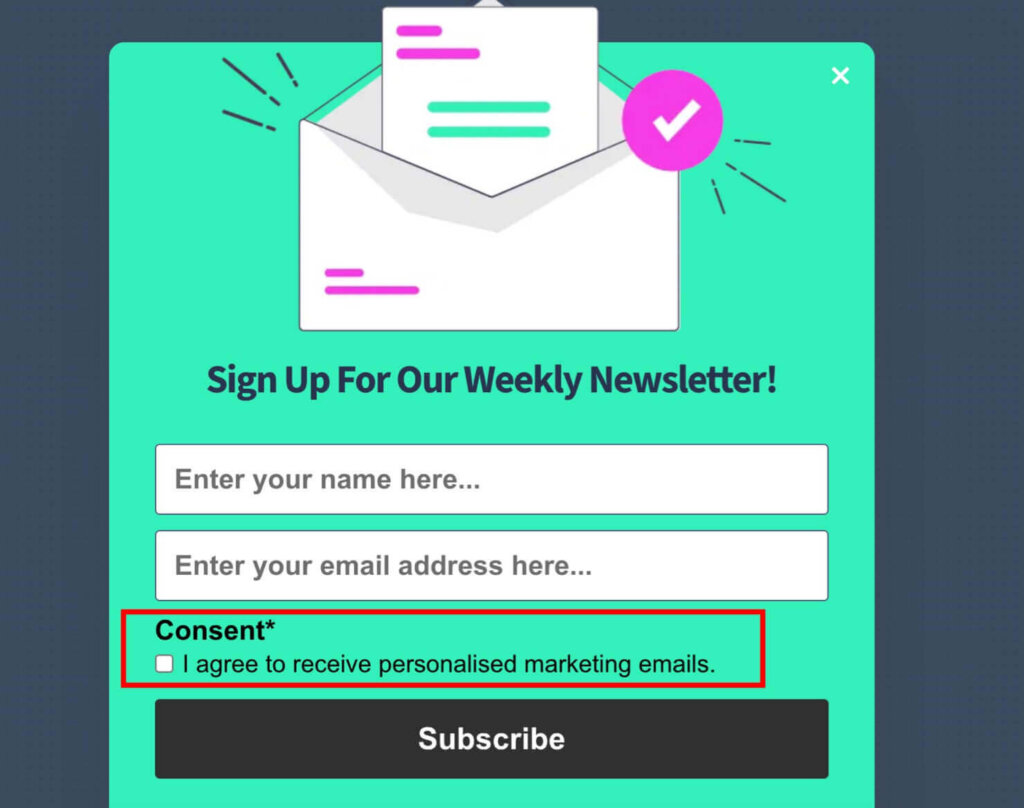
Pop-ups and GDPR: How to Stay Compliant While Generating Leads?
How to effectively capture leads with pop-ups while respecting the GDPR? Since the General Data Protection Regulation came into effect, companies must obtain explicit consent before collecting personal information. Non-compliance can lead to penalties and damage user trust. However, it is possible to optimize your pop-ups to remain compliant while generating quality leads. Discover best practices for leveraging pop-ups without compromising regulation or user experience!
GDPR rules to follow when using pop-ups
Using pop-ups to capture leads is an effective strategy, but it must comply with the requirements of the GDPR (General Data Protection Regulation) to avoid any penalties. Since its introduction in 2018, this regulation requires companies to protect personal data and ensure transparent and secure data collection.

Obtain explicit and informed consent
The GDPR requires that user consent be free, specific, informed, and unequivocal. This means that:
- Pre-checked boxes are prohibited: the user must check them themselves to give their agreement.
- Consent must not be coerced: users should be able to browse the site without the obligation to accept the terms.
- A clear option to decline must be provided next to the acceptance button.
Inform the user about the use of collected data
To ensure complete transparency, each pop-up must indicate:
- The purpose of the data collection (e.g. signing up for a newsletter, accessing a white paper).
- The duration of data retention and the rights of users.
- A link to the privacy policy, accessible with one click.
Facilitate the modification and deletion of data
Visitors must be able to easily modify or delete their data. This involves:
- A visible unsubscribe link in every email.
- An interface where the user can manage their preferences.
👉 By applying these rules, you ensure that your pop-ups comply with GDPR while maintaining a smooth user experience.
Design effective and GDPR-compliant pop-ups
Complying with the GDPR does not mean sacrificing the effectiveness of pop-ups. With an optimized approach, it is possible to capture leads while respecting regulations and providing a smooth user experience.

Use clear and engaging language
A GDPR-friendly pop-up must be transparent and appealing. Avoid complex phrasing and prioritize understandable and reassuring messages. For example:
✅ “Receive our exclusive tips! Sign up with confidence, your data remains protected and can be modified at any time.”
Instead of a simple “Accept our terms”, a message such as “We respect your privacy – choose your preferences” encourages more engagement.
Optimize design for transparency and accessibility
- Integrate clearly visible buttons: “I accept” and “I refuse” to offer a true choice.
- Favor discreet banners or slide-ins that do not disrupt navigation.
- Ensure that pop-ups are responsive and well-suited for mobile devices.
Automate consent management
Using a CMP (Consent Management Platform) allows you to manage, store, and prove user consent, a requirement of the GDPR. These tools also facilitate updating preferences.
👉 With a transparency and usability-centered approach, you can maximize your conversion rates while ensuring your pop-ups comply.
Respecting the GDPR while generating leads is possible with well-designed, transparent, and engaging pop-ups. With Poosh, you create compliant and optimized pop-ups, ensuring both a smooth user experience and effective lead collection.